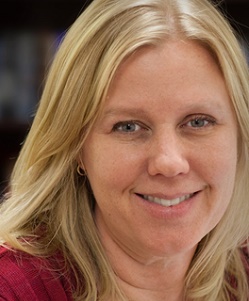This past month, the Religious Freedom Project’s Timothy Shah, Rebecca Shah, and Robert Woodberry directed a two-week intensive seminar with the Nagel Institute on the drivers and consequences of economic and social change in India. This week on Cornerstone, we’re asking seminar participants to reflect on their understanding of religion and development in India.
By: Aminta Arrington
I had only vague notions of religious freedom before I went to India. Of course, being in the majority makes one prone to vagueness, making visits and relationships out of one’s own powerful context an essential education. As I got into the specifics of what religious freedom means for religious minorities in India, here are a few things I learned.
Religious freedom is not just a high-level affair. While constitutional provisions and safeguards are important, religious freedom is an everyday life-level affair. Article 25 of India’s constitution guarantees that “all persons are equally entitled to freedom of conscience and the right freely to profess, practice, and propagate religion.” Despite this federal guarantee, it is in states, cities, towns, and neighborhoods that the abstract idea of religious freedom becomes reality—or becomes farce. For example, at the local level, it’s about a Christian community development association in Bangalore fighting for the Muslims living in the slums in which it works to have their own mosque. Religious freedom is about caring for one’s neighbors.
Religious freedom inserts itself into the space of other spheres of justice. While equality and fairness are difficult to argue against, religious freedom denies their absolute authority as paradigms. The Christian Medical College in Vellore, in order to maintain its identity as a Christian institution, allows various Christian institutions to sponsor candidates for admission, leading to a higher rate of Christians than the 2.3 percent national average. Yet, demanding fairness or equity would entirely squash the religious identity of this historic medical college.
Religious freedom helps the poor. As a recent Time magazine headline stated, “India is home to more poor people than any other place on earth.” According to the UN Millennium Goals Report, in 2010, one-third of the world’s poor lived in India. Much of the work being done to help the poor escape the cycle of poverty is done by faith-based NGOs, ranging from international powerhouses such as World Vision and Catholic Relief Services, to neighborhood-based indigenous religious organizations. In a pluralist country such as India, the work of a Christian NGO, for example, to empower women in the slums or provide education for impoverished children often catalyzes a Hindu or Muslim organization to provide the same. The end result is a flowering of local work done on behalf of the poor and needy. Religion has pro-development power, but a power that can only be unleashed in an atmosphere of religious freedom.
This atmosphere promoting religious freedom, in New Delhi’s grand boulevards as well as in south India’s dusty slums, is essential if the world’s largest democracy is to become the world’s most successful democracy.
Aminta Arrington is a professor of intercultural studies at John Brown University.
This piece was originally authored on July 29, 2015 for the Religious Freedom Project at Georgetown’s Berkley Center for Religion, Peace, and World Affairs.
THE RFI BLOG

Does Southeast Asia Lead the World in Human Flourishing?

RFI Leads Training Session on Religious Freedom Law and Policy for U.S. Army War College

Oral Argument in Charter School Case Highlights Unconstitutional Motives Behind OK Attorney General’s Establishment Clause Claim

Largest Longitudinal Study of Human Flourishing Ever Shows Religion’s Importance

Keys To Human Flourishing: Faith And Relationships Outweigh Wealth
CORNERSTONE FORUM

Reaffirming Religious Freedom: Bridging U.S. Advocacy and Iraq’s Constitutional Framework

Political Polarization, Same-Sex Marriage and Religious Liberty

Bridging the Gap Between International Efforts and Local Realities: Advancing Religious Freedom in the MENA Region

Challenges to Religious Freedom in Iraq and the Critical Need for Action


